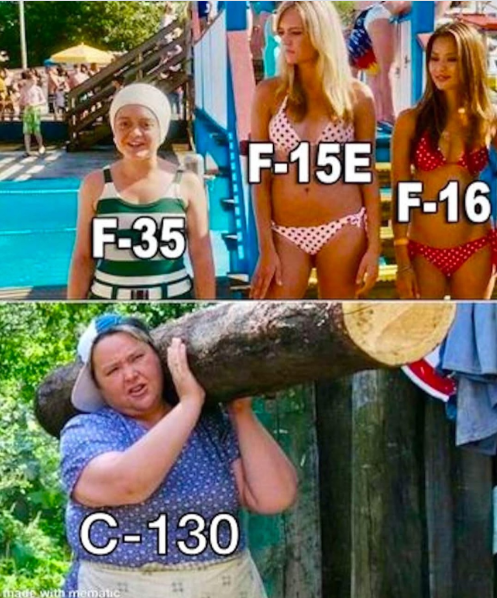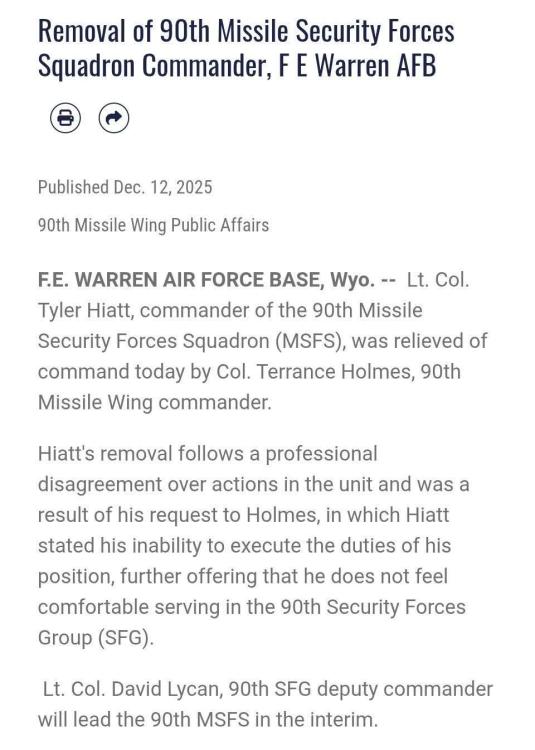Everything posted by M2
-
C-17 Nose gear collapses KCHS
Dumbass reporters, don't they know Charleston AFB and the International Airport share the same runway?!?
-
Lighten Up Francis!
-
Commanders are dropping like flies this year
Nothing new, when I arrived at my first assignment over 40 years ago, the SP squadron had been nearly wiped out by an unannounced piss test!
-
Commanders are dropping like flies this year
From what I've read, Hiatt was well liked and respected...
-
Commanders are dropping like flies this year
- Gun Talk
-
Gun Talk
A much better option that's about the same price and much better quality for a budget build truck gun!!
-
Reasons to despise cops
I am a huge supporter of law enforcement as I have a lot of friends who work in it at the local, state and Federal levels. I've also worked directly with local agencies and found most are honest, law-abiding officers who dedicate their lives to protect others. However, I also know such bullshit as this occurs all the time.... https://www.houstonchronicle.com/news/investigations/article/texas-traffic-stop-search-bexar-county-21079297.php I'd like to think it's with the right intent, but know it's usually overzealous officers stepping far beyond their authorities! I understand firsthand the border situation and that all capabilities are needed to defeat that threat, but harassing citizens like that should never be tolerated! And yes, that $7,268.46 Bexar County sent Schott to cover damages to his truck during the search comes from the taxes I pay!
- College Football
- WTF? (**NSFW**)
-
Gun Talk
Absolutely would NOT buy an ATI, they made shit AKs back in the day so I don't trust them one iota! Palmetto State Armory makes far better AR pistols for not much more!
-
Russian Ukraine shenanigans
Big difference between "losing" and "losing badly," and I am very well aware of how much territory has been lost and the costs on both sides from legitimate intel sources. Putin isn't winning...
-
Russian Ukraine shenanigans
Where are you getting your intel? And I'm talking real intel, not the Internet...
-
Gun Talk
Concur, starting a private range will be a lot easier than a public one...
-
What's wrong with the Air Force?
Actually, I've dealt with numerous graduates from the AQIT course, and they know their shit. That said, I'd avoid acquisitions like a burrito from Taco Bell! And at least they don't have the word 'weapons' in their name!
-
Recent Data Shows Significant Spike In US Military Aircraft Accidents
I don't think anyone will be surprised by this... Recent Data Shows Significant Spike In US Military Aircraft Accidents The number of major accidents involving military aircraft spiked in 2024, internal Pentagon figures show, and a series of high-profile aviation mishaps with deaths and the loss of aircraft in 2025 suggest the disturbing trend may be continuing. Across the military, the rate of severe accidents per 100,000 flight hours rose 55% in the 2024 budget year compared with four years earlier. The Marine Corps saw the highest increase, nearly tripling its rate over the same period. The statistics cover the full budget years 2020-2023 and then the first 10 months of the 2024 budget year, through July 31. In those 10 months of last year, 25 service members and Defense Department civilian employees were killed and 14 aircraft were destroyed... (Full story at title link)
-
Trump's Cabinet
-
UPS MD-11 Crash in SDF
Once again, Hoover nails it (STS)!
-
Turkish C-130 Crash (broke up in flight).
Lockheed C-130EM Hercules, registration 68-1609, a 57-year-old aircraft originally delivered to Saudi Arabia before joining the Turkish Air Force.
-
Turkish C-130 Crash (broke up in flight).
https://www.aerotime.aero/articles/turkish-c130-crash-georgia-azerbaijan-border
-
What's wrong with the Air Force?
Be more like Boyd... https://www.artofmanliness.com/character/advice/john-boyds-roll-call-do-you-want-to-be-someone-or-do-something/
-
Commanders are dropping like flies this year
https://taskandpurpose.com/news/air-force-relieves-521st-commander-confidence/
-
Android App Issues
ADMIN NOTE: Yeah, answering a six-year-old post, combined with their user name, may be a red flag fot a bot. We're being bombarded by them lately, somwhow they know how to bypass the filters to join. I'll look into it...
-
UPS MD-11 Crash in SDF
Just read that Captain Richard Wartenberg was with the 445th Airlift Wing at Wright-Patterson Air Force Base... https://www.daytondailynews.com/local/wright-patt-officer-was-one-of-those-killed-in-ups-crash/QIGGSYR5INFMRGTYSVYOV3EHXE/
-
The Next President is...











